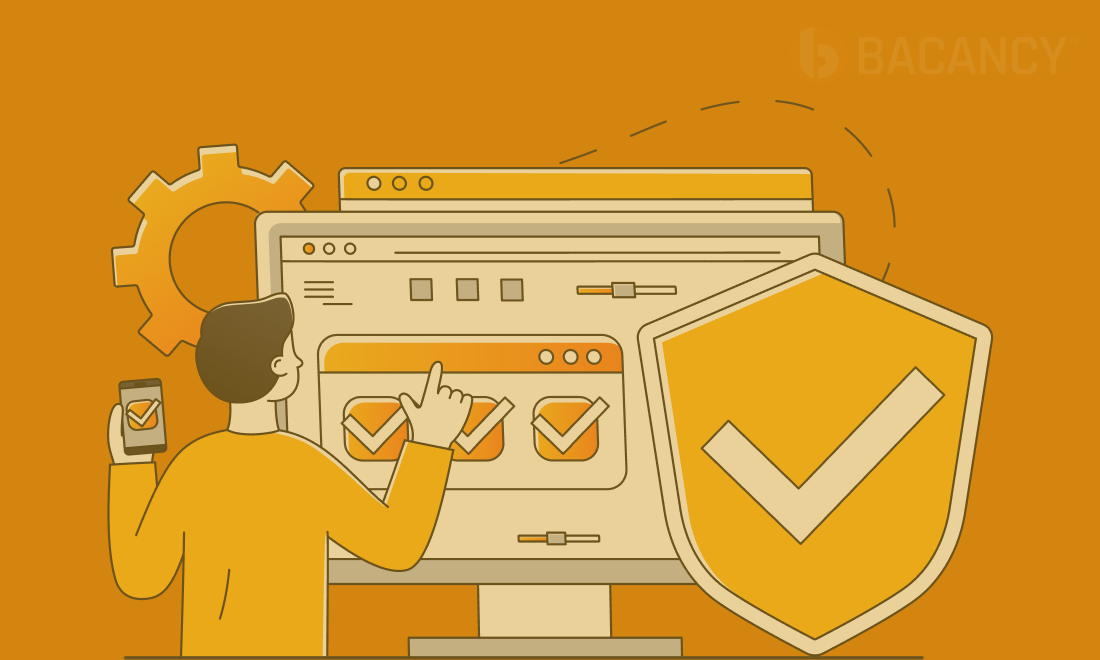Quick Summary
Learn how to build software from scratch through our comprehensive guide that helps you understand how the right approach and strategy lead to successful software development. Building a software product can involve several aspects that may seem overwhelming and complex, but going through our step-by-step guide can simplify the entire process for business owners or entrepreneurs looking to develop a software system. We will walk you through every step of software development along with the top challenges that come along the journey to bringing your software idea to life.
Table of Contents
Introduction
When it comes to building a software product from scratch, you can certainly find it both exciting and tiresome, as there are numerous steps involved in the process. From validating your idea and refining it as per market trends to developing and deploying a fully functional product, the process of developing software requires careful planning, development skills, and a well-structured approach. Whether you’re an entrepreneur or a startup founder looking to develop a digital product or a business trying to understand how to build a software solution from scratch, this guide can help you drift away from the confusion and get more clarity in the process.
Developing software for your business or enterprise can carve out the way to endless possibilities of growth. And, with the study conveying the software products market size estimated to grow from $1.77 trillion in 2024 to $1.98 trillion in 2025 at a staggering CAGR of 11.7 percent, there will never be a better time to invest in building software customized to your business needs and goals. But the first question that comes to your mind is how to develop a software product and what you must do.
The process of creating software is indeed a little challenging and time-consuming. The process involves a range of steps, starting with a thorough analysis of your end-user needs and careful planning, through appropriate architecture design to rigorous testing and seamless deployment. Let’s dive in to explore each and every step involved in developing your own software.
How To Develop A Software: Step-by-Step Approach
Your answer to the question “How to create a software?” lies in our carefully curated process that consists of simple and easy-to-understand steps to build a software product from nothing. Whether you want to build a simple business app or start your enterprise software development journey, you can follow the below process that will set you on the right path to success.

Validate Your Idea
Speaking out the fact, every successful software product starts with a solid idea that has the potential to transform the lives of people. Building a software product is not just about developing a functional digital product, it should be about developing a software solution that meets not only business expectations but also the needs of the end users. That’s the reason why anyone looking to develop their own software needs to validate their idea first before diving into development.
Conduct Market Research: You should understand your target audience’s pain points and evaluate if there’s a real demand for your software in the current market.
Analyze Competitors: Analyze the existing or similar software in the market, identify gaps, and figure out how your software can offer something better and unique to satisfy the end users.
Create a Proof of Concept (PoC): Build a basic version first to demonstrate feasibility and gather feedback from early adopters to launch the best version of your product.
Define Your Software Requirements and Objectives
The next thing you need to do is define your software requirements and objectives. For that, you need to start analyzing your business needs and understanding your target audience. Conduct research about your business rivals or competitors to identify their strengths and weaknesses and determine the unique features or functionalities your software should offer to end users. Additionally, you need to ensure your software complies efficiently with industry-specific regulations. For example, if you are developing software for healthcare, it should comply with HIPAA or GDPR.
Prioritize Core Features: Once your product idea is validated, you should make a prioritized list of features your software must have to fulfill its purpose.
Set Measurable Goals: Businesses need to define certain metrics or KPIs to measure the success of their software product, such as performance benchmarks, user satisfaction, and revenue targets.
Create User Personas: Make every possible effort to know and understand your end-users, their pain points, and need to build an excellent software that meet your users’ needs and expectations.
Plan Your Development Process For Your Project
After your software product idea and requirements are finalized, the next step includes preparing a strategic plan for your software development project. This phase involves defining the scope of your project, setting realistic milestones, and building a roadmap to ensure smooth execution. In this stage, defining the project scope can break down the development process into manageable tasks to avoid unnecessary hurdles later on. Businesses can outline the entire project scope with deliverables and case-specific KPIs along with defining the software application type, be it mobile apps, web applications, or desktop apps that they want to develop.
Define Your Project Scope: Businesses need to clearly outline the features, functionalities, and limitations of the software product they want to develop.
Set Milestones and Deadlines: It will be better to establish achievable milestones and timelines to make sure the development process stays on track.
Create a Strategic Roadmap: Prepare a strategic and well-structured plan of software development with all the details of each and every step associated with building software, from prototyping to deployment.
Choose The Right Tech Stack
Choosing the right tech stack while building your own software is one of the most critical decisions businesses have to make. That is because your software’s performance, scalability, security, and overall development cost will directly depend on the tech stack you choose. It involves selecting the right programming languages, frameworks, libraries, and tools that will best suit your software’s requirements and scalability goals. On the other hand, making the wrong choice can result in unnecessary complications, higher costs, and reduced software quality.
Assess Your Project’s Needs: You need to assess your project’s needs and consider factors like scalability, performance, security, and compatibility when you are selecting the right tech stack for your software development.
Evaluate Popular Technologies: Make sure to evaluate and research the trending technologies and frameworks that would be best fit for your project’s needs and goals.
Consult Experts: It would be better to consult with software development experts about which tech stack, frameworks, databases, cloud services, or software development tools to select to build your software product.
Document The Project Specifications
Before diving directly into the development process, it is crucial to document your software requirements thoroughly. The purpose behind this step is you or anyone else can refer to the documentation as the project blueprint guiding the entire development process. Documenting the project specifications can ensure all stakeholders are on the same page. Also, on the other hand, you can avoid possible misunderstandings and scope creep due to properly documented specifications.
Create A Software Requirements Specification: You can prepare an SRS to better outline functional and non-functional software development requirements and use cases.
Define System Architecture: Along with a well-defined system architecture, you should map out how various components of the software will interact with each other. Also, you should plan which functions to prioritize and which integrations to carry out.
Establish Acceptance Criteria: For the successful development and implementation of software, you need to clearly define an efficient criteria for your development team to follow.
Design and Prototype Your Software Product
In this phase, the design and prototyping of the software product take place as per your vision. The software design and prototype development team will make sure to transform your software product ideas into visual representations and functional models. The team will prepare the software design, so you have a clear understanding of the user interface, user experience, and overall navigational flow of your software before the actual implementation begins.
Create Wireframes and Mockups: Businesses can visualize the structure and layout of their software’s interface even before it is actually developed.
Develop Prototypes: You can build interactive, powerful prototype models to validate user experience and functionality so that it will be feasible to refine the software product until it’s up to the mark.
Gather Feedback: Developing a prototype model is beneficial as you can share it with the stakeholders and gather valuable insights to improve the design, functionality, or user experience before building the finalized product.
Develop The Software Product
The development process actually begins in this phase. This is the step where developers combine their capabilities, skills, expertise, and know-how to build a software product. It involves writing clean, maintainable code based on your project specifications and design. It will be beneficial if your development team follows coding best practices, utilizes version control systems, and keeps track of progress with the help of project management tools.
Set Up Your Development Environment: Companies should configure their tools, repositories, and version control systems to maintain consistency and track progress effectively.
Follow Coding Standards: Encourage your developers to adhere to industry standards and maintain a clean, modular codebase that can be easily modified or scaled.
Implement Features Incrementally: You should guide your development team to build software components one by one, testing and refining them to avoid overwhelming complexities during integration and facilitate easier testing and debugging.
Build Your Dream Software With Professional Experts
Hire software developers who have the skills, experience, and technical proficiency to turn your half-baked ideas into efficient, secure, and scalable software for your enterprise.
Test It Thoroughly
No software product can be said to be completely finished without thorough and proper testing. The purpose of this testing step is to make sure your software functions as intended and meets the standards and criteria set during the planning phase. By following rigorous testing process, enterprises can easily detect flaws in the software before deployment and ensure a smooth user experience.
Conduct Various Testing Types: The QA team or software testers perform unit testing, integration testing, system testing, and user acceptance testing (UAT) to identify bugs and ensure seamless functionality.
Automate Testing Where Possible: It will be advantageous to utilize automated testing frameworks wherever possible to save time, improve accuracy, and enhance test coverage for your software.
Fix Bugs and Enhance Performance: With rigorous testing, developers can address issues as they arise and continuously refine the software to improve its efficiency and usability.
Deploy and Monitor
After successfully developing and testing your software, this steps is all about launching the software and making it live for your end users. However, deployment is not a one-and-done process as it is quintessential to continuously monitor the software product to make sure it runs smoothly and efficiently. With consistent monitoring, your software can meet user expectations and function without any errors after deployment.
Deploy To The Desired Platform: Enterprises can select the most appropriate environment for their software deployment based on their needs and goals, whether it’s cloud-based, on-premise, or a hybrid solution.
Monitor Software Performance: Developers can utilize cutting-edge monitoring tools to track key metrics like uptime, response time, user interactions, and overall performance.
Implement Feedback Loops: Post-deployment of your business software, it is essential to continuously collect user feedback to identify potential improvements or issues that require immediate attention.
Maintain and Iterate Your Software
Building software is not just a one-time process that you can invest once and reap its benefits forever. Nevertheless, software development is an ongoing process. To keep your product relevant, efficient, and aligned with evolving business needs, regular maintenance and iteration are crucial. Companies that consistently improve their software can only have the chance to beat the competition in providing true value to their end users. For businesses that are looking to develop long-term software solutions, maintenance and iteration of your software can help achieve sustained success and user satisfaction.
Update Your Software Regularly: Whether it’s adding new features, enhancing existing functionalities, or fixing bugs, businesses are advised to ensure their software remains up-to-date in terms of security, features, and performance.
Adapt To Changing Market Demands: Make sure your in-house team continuously monitors user feedback for your software along with current industry and market trends to refine the software accordingly and keep it relevant.
Optimize Performance: To deliver a flawless user experience and make your users satisfied, regularly reviewing and enhancing your software’s performance are what lead your business toward sustainable success and growth.
Top Challenges To Overcome When Building A Software
Building software from scratch is certainly not a piece of cake as it requires careful planning and errorless implementation, along with combined efforts, skills, and technical expertise from professionals. Businesses and enterprises often face numerous challenges at the time of developing software. Such challenges can not only hinder progress but also have a significant impact on the quality of the final product. Here are some of the most common challenges businesses may face when building a software product:
Defining Clear Requirements: Misunderstandings or poorly defined requirements can surely lead to scope creep or over-stretching your budget limits. Hence, defining crystal clear software requirements can help you overcome this challenge.
Choosing The Right Technology Stack: Selecting inappropriate technologies or choosing the wrong tech stack can negatively impact the performance, scalability, and development speed of your software. Get assistance from technical experts, but make sure to choose the right tech stack that aligns with your business goals and requirements.
Managing Time and Budget: Without proper planning, your project can easily go off track, which could result in delayed timelines and budget overruns. However, adopting agile software development methodologies, maintaining realistic estimates, and strategic planning helps you tackle this issue.
Ensuring Security and Compliance: Developing secure software that meets industry regulations and standards is a little challenging yet necessary aspect when developing a software product of your own. With the implementation of appropriate security protocols and regular audits, businesses can mitigate risks effectively.
Maintaining Transparent Communication: Poor communication among stakeholders, developers, and designers can lead to unnecessary revisions and conflicts. Establishing clear communication channels and regular progress updates can keep everyone on the same page.
A Quick Checklist To Follow When You Build Software From Scratch
Now, you must understand how to build a software product from scratch and how essential it is to follow a meticulous planning and execution approach. To make it easier for you, we have curated a quick checklist for entrepreneurs, business owners, and decision-makers to make sure your software development journey stays on the right track.
| Pre-Development Essentials | Post-Development Essentials |
|---|
| Clearly define your software idea and validate it through market research.
| Thoroughly test your software for bugs and usability issues.
|
| Document all software requirements and specifications.
| Deploy the software to your chosen platform (cloud, on-premise, or hybrid).
|
| Plan your project timeline, budget, and milestones.
| Continuously monitor software performance and gather user feedback.
|
| Choose the right technology stack that suits your business needs.
| Ensure data security, compliance, and regular audits.
|
| Design prototypes and wireframes to visualize your product.
| Implement updates, fixes, and enhancements based on user feedback.
|
| Prepare a scalable architecture that can grow with your business.
| Maintain effective communication with stakeholders and end-users.
|
| Establish acceptance criteria for the software development process.
| Keep refining and optimizing your software for better performance.
|
Conclusion
The process of creating a software product from scratch is indeed extensive and requires not only meticulous strategic planning but also technical skill and expertise, along with continuous maintenance and refining as per industry and market trends. By going through our guide on how to build a software solution, any business or enterprise can follow it to develop high-quality software that helps them grow exponentially and achieve success. In case you need expert assistance in developing software or want to hire well-experienced software developers, consider partnering with a leading software development company. Their immense expertise in the software development industry and top-notch developers can help turn your vision into a software product for your startup, business, or enterprise.
Frequently Asked Questions (FAQs)
Well, the cost or expenses of developing a software product from scratch primarily depend on multiple factors, such as your software needs, project scope, complexity, resources required, technical expertise, design requirements, and even the development stage. The cost of developing simple software with basic features and functionalities might range between $10,000 to $70,000, depending on your project needs. While a more complex and customized software development may cost around $50,000 to $400,000 or more. It is best to connect with professionals to get an accurate cost estimation.
The development timeline may vary depending on your project’s complexity, scope, features, integrations, service location, and even development methodology. Building a scalable, high-performing, and feature-rich software that meets industry standards and compliance can take 8 to 20 months, depending on your specific business needs and goals.
You should choose a programming language or tech stack based on your software’s requirements, scalability, performance, use cases, and other crucial factors. Some popular choices include Python, Java, JavaScript (with frameworks like React and Node.js), C#, Ruby on Rails, and more. It will be beneficial to get assistance from technical experts to determine the best programming language, frameworks, and tools to develop a software for your business or enterprise.





